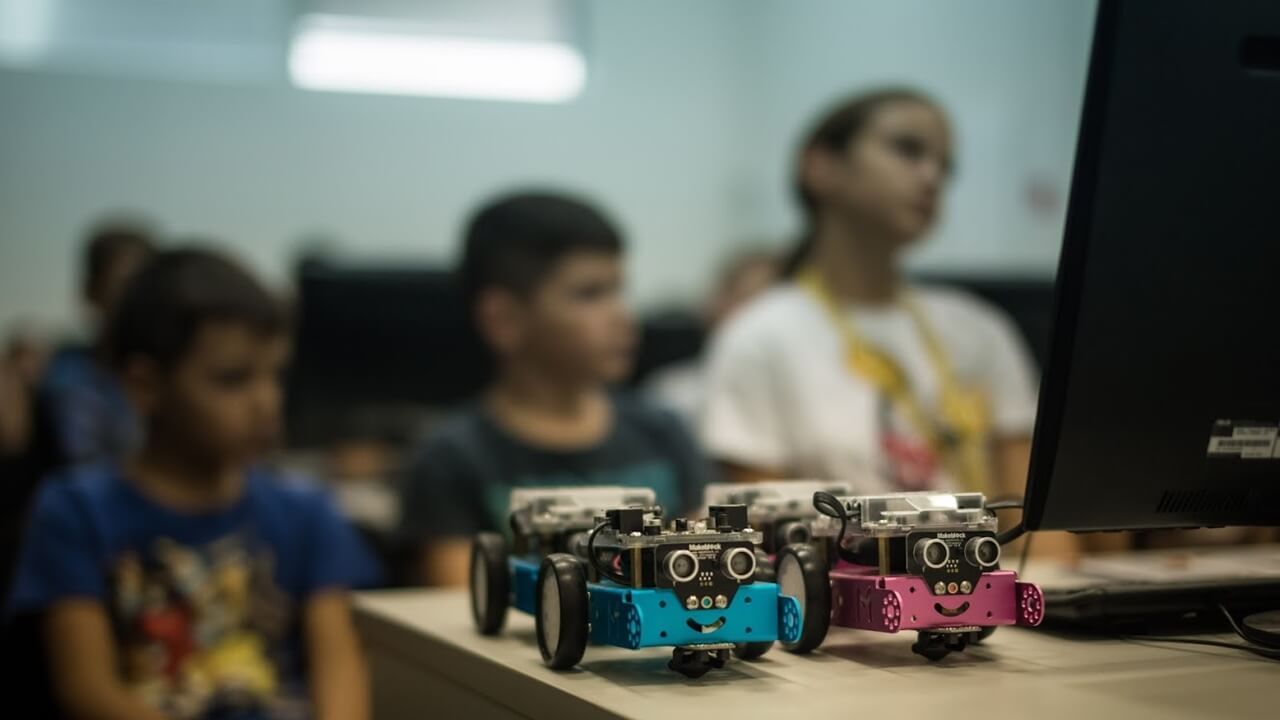posted: 05.03.2020 11:44
School
SPARK Parenting: How to Encourage STEM Interest in Your Child
In recent years we hear the term STEM all the time. Whenever it comes to education, curricular reform or 21st-century skills, STEM is an inevitable topic. What does it mean and why should we deal with it?
What is STEM?
STEM is an acronym for the initial letters of four areas – science, technology, engineering, and math. In the early 1990s, the National Science Foundation (NSF) in the United States began using the acronym “SMET” to cover these four areas in a single term. Only later, in 2001, American biologist Judith Ramaley, who also worked at NSF, rearranged the letter sequence and STEM was created. Since then, this acronym has been used in many countries outside the United States. Many similar acronyms include another additional letter in the name that designates a specific area, for example, STEAM (Science, Technology, Engineering, Arts, and Mathematics), STREM (Science, Technology, Robotics, Engineering, and Mathematics), eSTEM (environmental STEM), STEMM (Science, Technology, Engineering, Mathematics, and Medicine).
Application of STEM
When it comes to the term STEM, much emphasis is placed on the common link between the area covered and the so-called integrated learning, which means that children connect a particular area of learning for ease of learning. STEM education should help students understand how things work, how to improve certain things and solve problems with technology. The interdisciplinarity and combination of these four areas provide students with an opportunity for more relevant learning that is integrated. In addition, STEM has been proven to help students become better at solving problems, fostering innovation, logic and technological literacy. By developing these skills at an early age, children are being provided with quality foundations for future growth and development.
Scientists agree on one thing, early learning in math and other STEM disciplines improves children’s learning abilities and narrows the gap between children’s achievement when they reach an older age. If you stimulate children’s interest in STEM in the early years of life, they increase their chances of greater achievement later in life. If your child has an interest in the STEM field, that does not mean that he or she has to study mathematics later or become an engineer. Any child can benefit from exploring and learning STEM concepts. Critical thinking and problem-solving are universal skills that will be developed and used later in any profession. Today’s elementary school students are preparing for a job market that is unknown to us. We do not know what occupations will be sought in the labor market in 15-20 years when they complete formal education. But one thing is for sure, by developing “universal” knowledge and skills, it will seamlessly adapt to any technology and workplace. Coding skills will also be required in non-software engineering fields, with financial analytics and marketing as an example.
21-century Skills
Demand for STEM occupations is faster than most other occupations, employees in these areas have higher salaries, and the skills your children can acquire are also needed in other non-STEM fields. In addition to STEM, 21st-century skills are also often mentioned. They identify the 12 traits/abilities that today’s students need to have successful careers, such as critical thinking, creativity, collaboration, communication, information literacy, media literacy, technology literacy, flexibility, leadership, initiative, productivity, and social skills.
How to encourage children to engage in STEM?
It is quite normal for parents to practice reading and writing with their children, and it is a much more common occurrence than learning STEM at home. Most parents do not recognize the potential of activities such as building, repairing, shopping, cooking, gardening, cleaning, watching sports, and self-care, which can be a great inspiration and foundation for developing critical thinking skills. On the other hand, we have parents trying to find educational and useful games, tailored to their children, to engage with a bunch of mobile apps available. When it comes to such apps, the amount of knowledge that children will gain without additional interaction, conversation, and adult support is minimal. STEM can help develop afore-mentioned skills, and below are some tips on how you can encourage kids to engage in these areas:
- #1 Be a role model
How many times have we heard that children are real copy-cats and often imitate their parents’ habits? The best way to encourage your kids to do STEM is to start playing with them.
- #2 Get out
You do not need expensive equipment, such as lab kits, a microscope, and the like, to awaken the true research spirit in children. Staying in nature, observing the stars and celestial bodies, or weather can very easily be transformed into educational lessons where you can very easily relate materials from nature and society, geography and biology to real-life examples for children.
- #3 “What?”, “How?” and “Why”
Ask as many questions as possible for the children to explain their opinions, encouraging them to think about different events and situations.
- #4 Experiment
The internet is an endless hotbed of good ideas, and you can find great science projects to try with your kids using the ingredients you can find in the home. Tornado in a bottle, rainbow in a glass, lava lamp, instant ice, baking soda volcano are just some of the projects that you most likely have all the necessary props in your kitchen.
- #5 Calculate
Try using math wherever you are. Counting fruit in a basket on a table, going to the grocery store, observing passersby and a group of people can serve as inspiration for the math challenge you will set for your child. In order for a child to become a great mathematician, one does not have to be born with a particular kind of brain. Most children who work hard enough to show interest in the area can be successful.
- #6 Buy the right toys
Today there are many science and STEM kits at very reasonable prices. In addition to being instructed with the kits themselves, there are plenty of projects available on the Internet that your kids can try out on their own or with your help. Maybe the next birthday present could be a STEM set that will inspire them to explore and where they will learn a lot through entertainment. Always choose toys that will inspire imagination, creativity, and thinking.
It is important to guide children from the youngest age towards the STEM area. In addition to gaining insight into different career paths, they will develop problem-solving and critical thinking skills that will help them in their daily lives. Consider some of the suggested tips and enter the STEM world with your kids.


